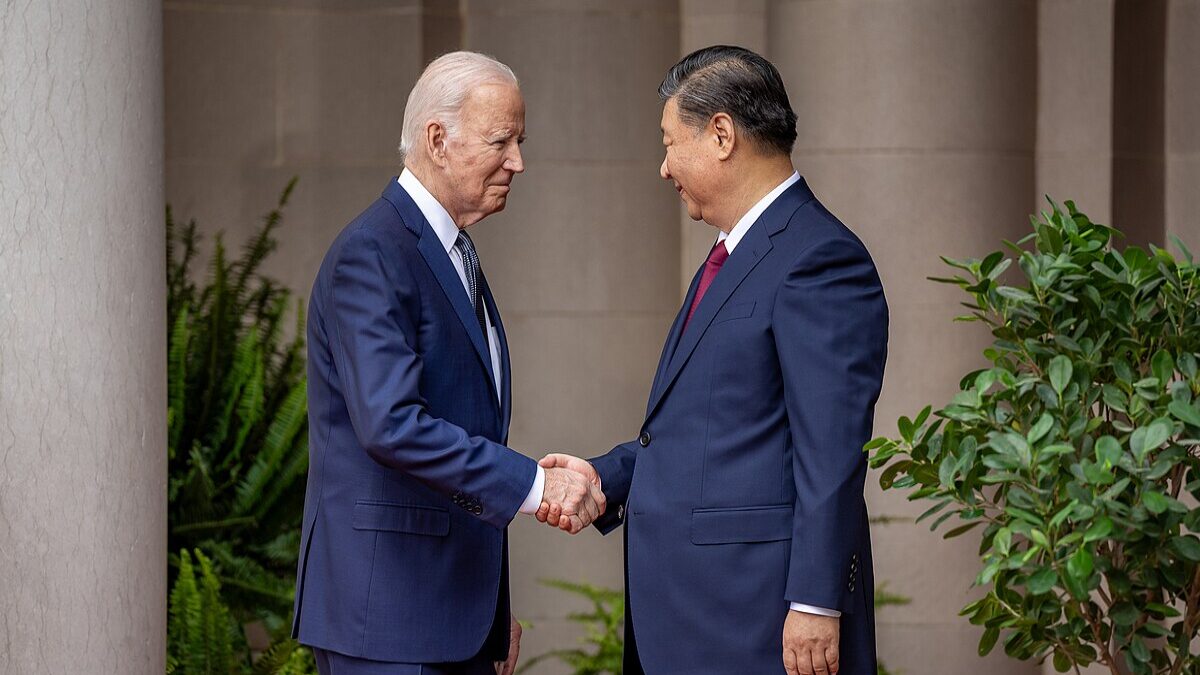
“Hillary,” the four-part documentary created by Nanette Burstein and aired on Hulu, seeks to shed light on what happened in the 2016 election for the “non-deplorable” half of the country that voted for Hillary Clinton.
Unfortunately, it failed in this respect, as well as in several others. Here are five ways in which the documentary comes up short.
1. Transparency Is Impossible for Hillary Clinton
Clinton and others interviewed for the documentary admit that she has not always been transparent, but they blame that on what the media and Republicans put her through. This documentary was supposed to show Hillary in a new light, and make her more accessible. Yet on the hard issues Hillary is just as closed off as ever. She gets defensive when asked about her marriage, her Wall Street speeches, and Bernie Sanders.
When asked why there is no film from election night, Hillary refuses to look at the camera and says, while staring at her phone, that no one wanted cameras around, although she was sure that would have been different if they’d been winning. This is the only kind of transparency the docu-series achieves: Cameras on when things are good, cameras off or dimmed when things get hard.
One thing we did learn is that no amount of interviews can make Clinton put down her walls. This was made most clear when one contrasts her hours of camera time with the short clips of Bill Clinton’s interview with Burstein. His tearful re-telling of the Monica Lewinski affair might be the most poignant part of the documentary. We never got anything close to that depth of emotion from Hillary.
2. Hillary Is Not the Feminist Icon She’s Made Out to Be
Hillary’s life coincides with the second wave of feminism, and she is seen as a leader within that movement. Yet Hillary often demonstrated that political success was more important to her than her feminist ideals.
For example, during Bill Clinton’s first term as governor of Arkansas, Hillary seemed to purposefully shun any semblance of femininity, refusing to dress the part or take the Clinton name. However, as became a pattern throughout her political career, she caved when she realized her actions were affecting her husband’s political ambitions. During Bill’s second term, she took his name and began dressing like all the other political wives of the decade.
Hillary was very involved in Bill Clinton’s run for president in 1992 until an inadvertent comment about baking cookies created backlash. For much of the rest of the campaign, Hillary was relegated to the sidelines, holding Bill’s umbrella during speeches, stepping forward for an introduction and then back behind her husband.
Also, many women could not stop wondering: Would a true feminist stay with a man who has habitually cheated? It was clear to most that Hillary chose her political career over her principles, making it difficult to take her seriously as a feminist icon thereafter.
Hillary complained both that people couldn’t get past the fact that she was a woman on the campaign trail and that she didn’t get enough credit for getting so far as a woman in politics. While running against Sanders in the presidential primaries, the fact that Hillary was a woman was often forgotten. This annoyed her. In an interview she expressed irritation that although she was the first woman to ever win the Iowa caucus, all the media could talk about was how well Sanders had done.
At times in the documentary, Hillary seems to resent that she is a woman. She explains in one interview with Burstein that she once calculated the time she spent in hair and make-up during the 600-day campaign for president in 2015-2016. It was 25 days. None of the men had to do that, she says, irritated. At one point Hillary said to someone on her campaign who criticized her shoes, “Honest to God, do you think anyone talks to Bernie Sanders about his g-dd-mn shoes.”
Being a feminist shouldn’t mean that one has to act like a man or resent the obligations that go along with womanhood. Being a feminist should be about demanding opportunity, opportunity that Hillary has been given over and over again.
3. Hillary Isn’t a Me Too Candidate
At the end of the documentary, Hillary tries to take credit for the 2017 Women’s March, claiming her loss spawned the movement. This does not check out.
Hillary is anything but a Me Too candidate. Her role in protecting her husband from allegations of sexual assault disqualify her from even the loosest connection to the Me Too movement. Hillary’s role in not only protecting Bill Clinton, but attacking his accusers, is conveniently left out of the whitewashed biopic.
It also makes no mention of the Clintons’ connections with Harvey Weinstein and Jeffrey Epstein. This can’t just be an oversight, as Weinstein was slated to produce “Hillary” right up until the allegations against him were published.
4. Hillary Still Can’t Defend Her Emails
The defense Hillary offers for using a private email server during her tenure as secretary of State is weak at best. She takes responsibility for not being able to talk about the controversy effectively and claims it was a mistake because of what it did to her campaign, but she never takes responsibility for breaking the law.
In fact, she claims she broke no laws, not even when she defied a congressional subpoena and deleted 30,000 emails, nor when she had an aide take a hammer to her Blackberry. She shows no concern that her email server was hacked or that she allowed aides without security clearance to go through her emails, classified or not.
She is right: she has never learned the correct way to talk about this issue.
5. The Trump-Russia Collusion Hoax
The documentary completely bypasses the role the Clinton campaign played in the Trump-Russia collusion narrative. There is no mention that it was the Clinton campaign that hired Fusion GPS, which in turned hired Christopher Steel to do opposition research on Donald Trump. There is no mention of the fact that when Steele could not find any damaging information linking Trump to Russia, he either made some up or let himself be fed false information from the Kremlin.
Hillary offers no apology or explanation for allowing lies ginned up by her campaign to serve as the basis for the FBI and Department of Justice’s assault on anyone connected with the Trump campaign. But of course this would not have fit into the narrative of a feminist hero, so it had to be left on the cutting floor (assuming it ever made it that far).
Even after 35 hours of interviews, 2,000 hours of behind-the-scene footage, and copious amounts of vintage B-roll of Hillary’s life, Burstein’s documentary doesn’t tell viewers anything they did not already know about Hillary Rodham Clinton. This should not be blamed on Burstein, but on her subject.
The documentary is essentially a sequel to “What Happened?” It is a list of who’s to blame for Clinton’s loss in the 2016 election. The documentary paints Hillary as a victim of sexism and chauvinism, of endless right-wing attacks, of being misunderstood by the people and the media.
Whatever the reasons are for Hillary’s loss, the documentary never effectively demonstrates that Clinton should have been our president. In fact, it confirms the opposite. Yes, I want that glass ceiling to break, but at what cost? Certainly the price we would have paid for Hillary’s presidency would have been too high.









